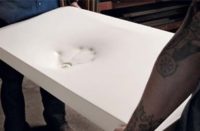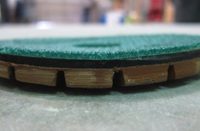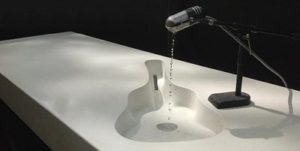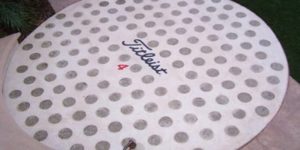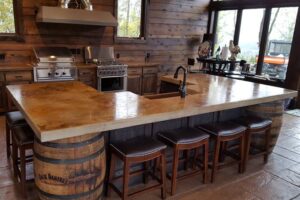They say that the definition of insanity is doing the same thing the same way and expecting a different result. If that’s true the majority of concrete countertop makers I know are nuts (including me). Sometimes the status quo is not working and you need to make changes.
I have kept an eye on my old projects for clues on how to improve future projects. One thing I noticed is that it seemed like a lot of the wet-cast apron-front sinks I cast had developed very fine hairline cracks in the corners. The cracks never opened up but would show up when the sinks got wet. I don’t know if the sinks cracked during striping and handling or from concrete shrinkage later — all I knew was I had to stop them.
I tried higher dosages of fiber but that lead to more problems, such as an unworkable mix and more bug holes. Remember, the sinks had to match the counters. Plus, the way the cracks started at the top and worked their way south did not lend itself to a fiber reinforcement fix. The cracks would open like a zipper.
I believe it was the French who originally used iron bars to reinforce concrete. Their solution worked for me. I used a single piece of No. 3 bar very precisely bent and placed exactly where the concentrated stress was occurring. “Chairs” made for architectural precasters hold the bar in place in the corner.
Any crack that attempted to start would now have to stretch steel to keep running.
I’ve achieved 100 percent crack-free apron-front sinks since turning to this method of reinforcement several years ago. I will never again cast an apron-front sink without the 50-cent piece of steel.
Steps for Setting Up an Apron-front Sink Mold
I often get the question of how to assemble an apron-front sink mold. How do you get into those tight spaces inside the mold to caulk them?
The answer is you don’t.
- Start by securing the sink mold to the base form. You can screw through the base form or bolt solid through the center of the drain hole.
- Temporarily attach the form sides and check all dimensions.
- Mark the location of the form sides and remove.
- Caulk the sink mold.
- Use a gasket material to seal the bottom of the form sides — this will prevent concrete leakage and discoloring. Precast supply companies sell gasket material or you can use gasket made for screen doors. The gasket should compress easily.
- Reattach form sides and cast!
